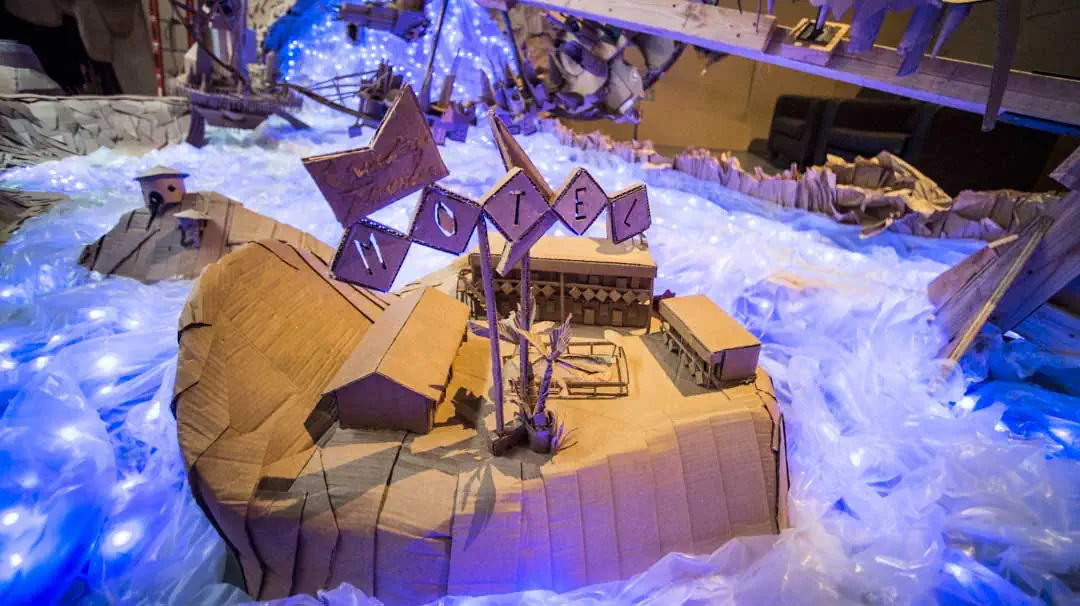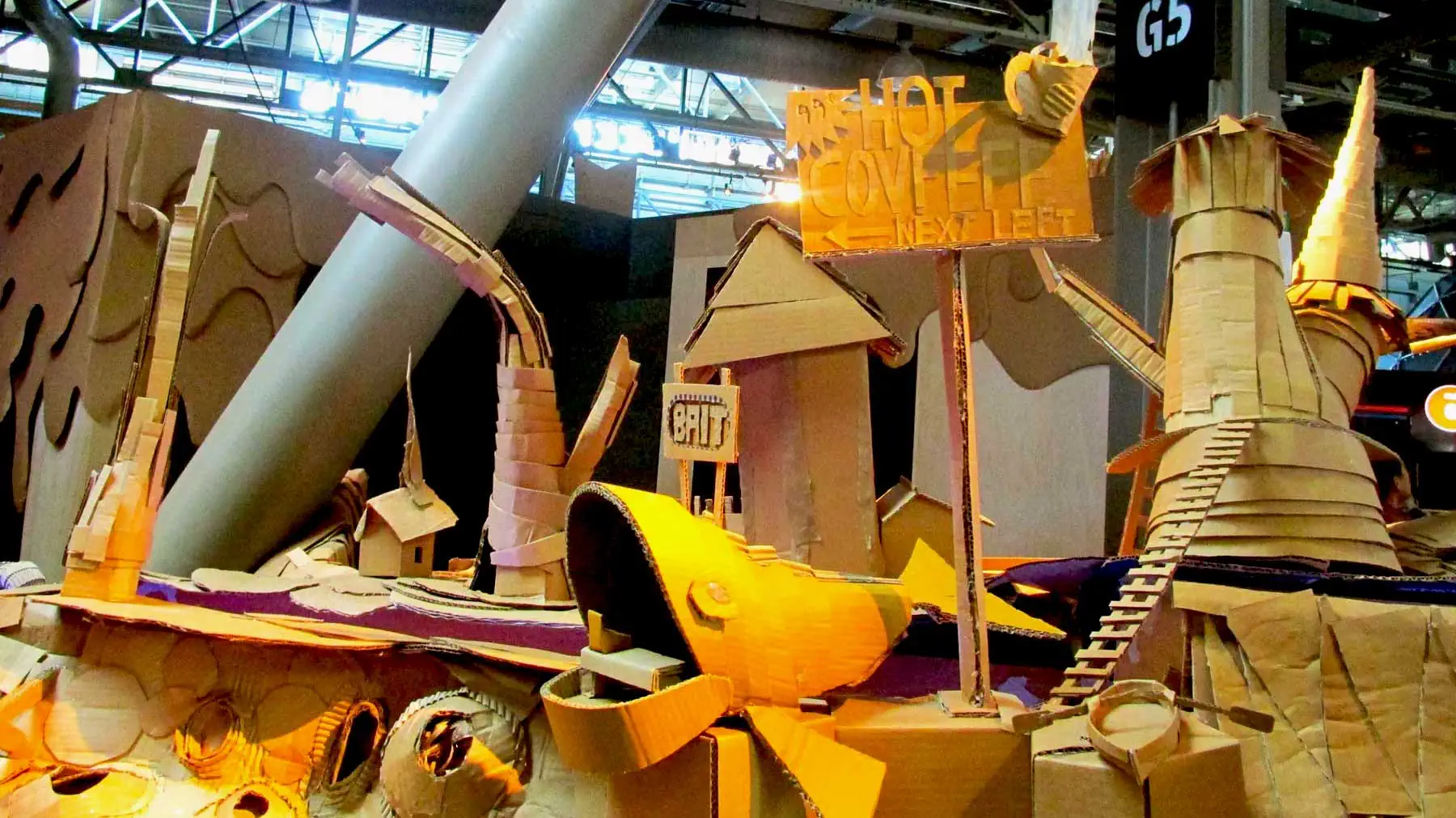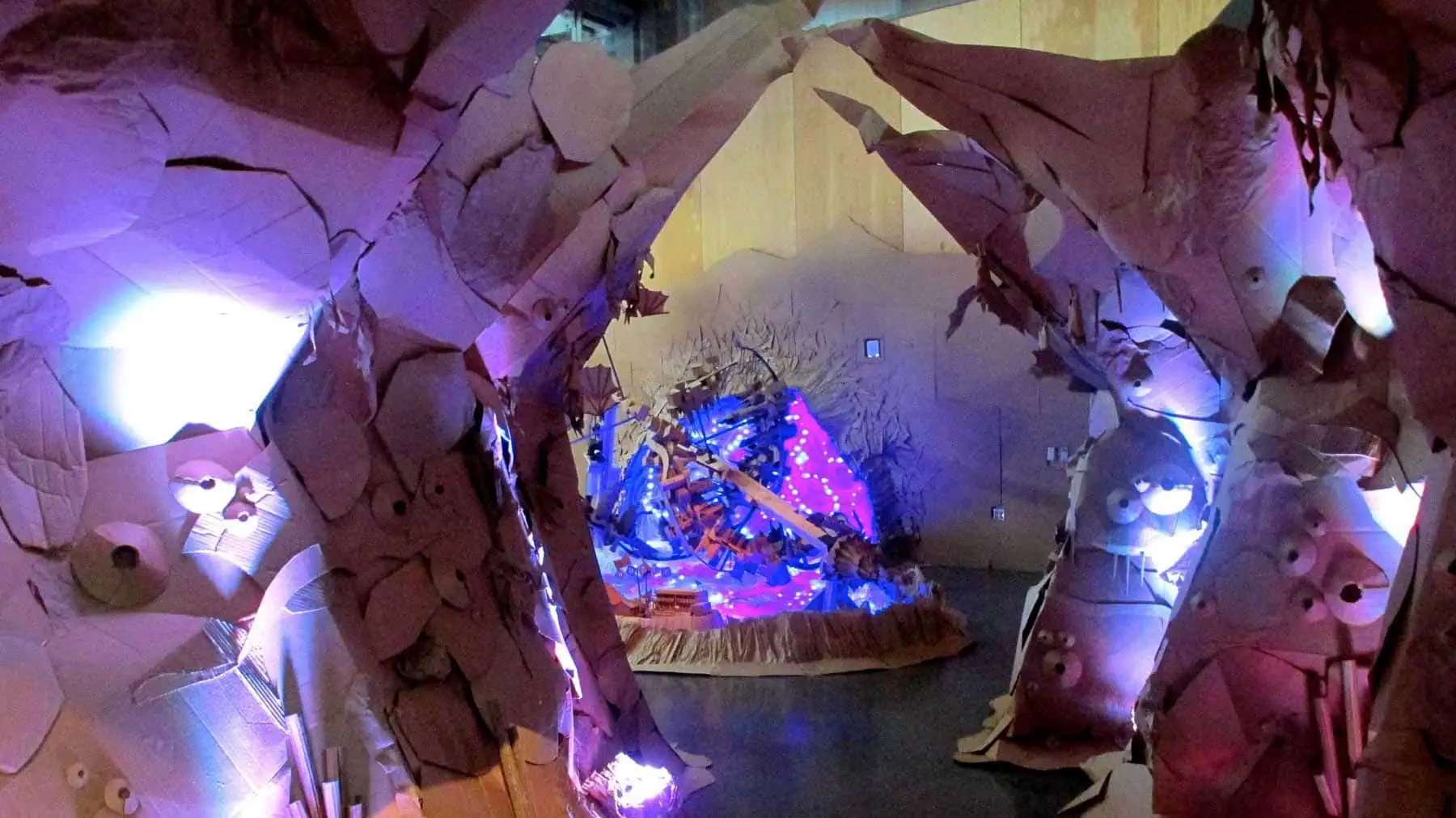
By Alexandra Fradelizio | m/Oppenheim Media Writer
Tucked away in the Marin Headlands, 7 artists from the Cardboard Institute of Technology sought to answer a simple yet often perplexing question: What is waste? Their ultimate answer was to re-imagine waste not as a pointless entity of everyday life, but to exhibit how scraps that are mindlessly discarded can create a landscape of imagination.
Armed with over 1,000 pounds of cardboard and 2,500 hot-glue gun sticks, the team of artists that has worked together in the Bay Area created WildCard, an exhibit opening exclusively at the Exploratorium in San Francisco’s Pier 15. The exhibit pays homage to the folklore of America, from its motels and tourist attractions along Route 66, to its natural resources and scenery.
WildCard highlights the importance of water within the country as a continual mode of transportation.
“A lot of our intentions and excitements were focused on the river,” said Jesse Wilson, one of the artists of the project. “We wanted to highlight the fact that we very much rely and depend upon water.”

The creators of WildCard centered on a river-based theme for their project to explore how rivers were once used as highways that would transport goods and materials. With the introduction of cardboard as a means in which products are transported, the artists sought to create a “full circle of bringing things back” to their origins, Wilson explained.
“We don’t think about the longevity of things. We are inspired to make something beautiful out of something so simple,” she stated.
Referring to cardboard as a type of boat in which products are transported to individuals, Wilson explained how imagination creates endless possibilities for a box, so that it’s “never just a box.”
“It’s like a ‘build-your-own’ adventure. It’s how to see things represent their purpose through process.”
With the help of a large team of volunteers, the WildCard artists installed the exhibit over the course of eight days. The initial production process lasted three weeks and took between 500 and 600 hours to construct. Building the rivers and landscapes in pieces, the cardboard scenes were transported from a warehouse in the Headlands to the Exploratorium, where the exhibit was reconstructed using photos for reference.
Wanting to create “forums for the public eye,” Wilson, who previously constructed a cardboard exhibit for the museum in 2010, said WildCard aims to educate visitors about the waste associated with shipping and packing materials.
“We’re giving the cardboard one more life before it goes to waste and adding one more elegant history of something we consider garbage,” she explained.
Along with its giant volcano and intricate village landscapes, WildCard features a World Builder, a spiral and rotating community that represents corporate civilization.
“We always really appreciated the imposed community effect,” said Wilson. “It’s a core of force that always moves and doesn’t stop.”
WildCard plays on the notion of scale and encourages visitors to observe and notice the different textures and materials that construct the exhibit.
“The more you look, the more you’ll see,” explained the Exploratorium’s Director of Museum Experience, Robyn Higdon.

As the exhibit opens to the general public on June 17, children and adults alike are encouraged to touch the non-toxic and 100% recyclable materials that are living their “second life” through the exhibit.
“The exhibit inspires people to set down their digital devices, to go home and create their own world,” said Higdon.
In addition to WildCard that will be displayed throughout the summer, the Exploratorium is hosting a series of interactive paper art exhibits for families and children.
The exhibit will run at the Exploratorium from June 17 to September 4, 2017. Learn more at https://www.exploratorium.edu/wildcard
—
m/Oppenheim Media writer Priscilla Rodriguez contributed to this report.
